Trivia Browser

▲
1
▼
In a 1997 interview with the game's director Koji Igarashi & designer Toshiharu Furukawa, they were asked how they came up with ideas for the game's huge assortment of weapons and items. Igarashi stated that they used a variety of different references, books and other materials, and tried to include things that had never been used in a Castlevania game before.
Furukawa added that each of the staff members had a special attachment to a different kind of blade, so they ended up using a good variety of blades in the final game. However, this bias did result in the developers' favorite weapons being overpowered, adding that "Not realizing that no one liked shields was a bit of a blind spot…"
Furukawa added that each of the staff members had a special attachment to a different kind of blade, so they ended up using a good variety of blades in the final game. However, this bias did result in the developers' favorite weapons being overpowered, adding that "Not realizing that no one liked shields was a bit of a blind spot…"
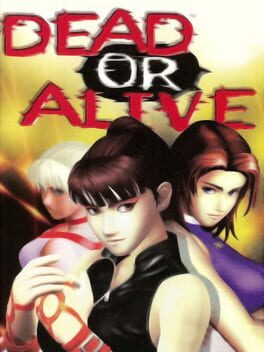
▲
1
▼
Early promotional images for the game features Kasumi in a different, more revealing, costume. Her final design were be changed to white and have underclothing. And her previous design became her alternate costume.
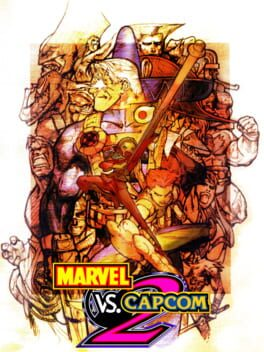
▲
1
▼
According to the game's director Tatsuya Nakae in a 2000 Arcadia magazine #3 developer interview, he was asked if he could comment about the three new original characters: SonSon, Amingo and Ruby Heart in the game. Nakae stated that until now, Norimaro had been the only original character in Marvel vs. Capcom series, so he wanted to add more new characters in the game from the start. When Nakae asked the game's lead character designer Katsuhiro Eguchi for some designs, Eguchi told Nakae that he wanted to revive someone from a classic game and sent him a design that reinterpreted SonSon as a girl; Nakae stated "it was interesting and had a lot of impact" and put the character in the game.
Nakae then stated that Amingo was designed to fulfill the missing role of a non-human Capcom character that was "capable of really crazy movements", and that Ruby Heart was designed to be the leading character of the three newcomers (in a marquee role similar to Ryu and Cyclops) and as a new challenge to create a "cool, female character", the kind of which had not commonly taken center stage in games released at the time.
Nakae then stated that Amingo was designed to fulfill the missing role of a non-human Capcom character that was "capable of really crazy movements", and that Ruby Heart was designed to be the leading character of the three newcomers (in a marquee role similar to Ryu and Cyclops) and as a new challenge to create a "cool, female character", the kind of which had not commonly taken center stage in games released at the time.

▲
1
▼
The game was originally going to be titled "Polygon Fighter" during its prototype phase of development. The title was then changed to "Ninja Fighter" before finally settling on "Dead or Alive" because of the pressure Tecmo placed on the game's success.
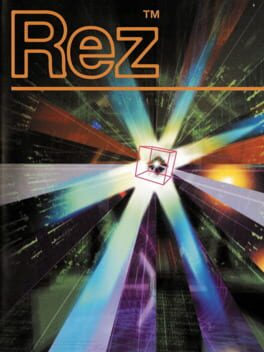
▲
1
▼
In a 2001 interview with the game's director Jun Kobayashi featured at the game music column of allabout.co.jp, he was asked who his target audience for the game was. He responded:
"At first, I was thinking of a game for people who liked club music, something they could enjoy without actually going to the club."
"However, after mulling it over, we finally decided on targeting people who are new to video games with Rez. I mean people who maybe bought a Playstation 2 and watch DVDs on it, but hardly play any games. Or people who think “games today are too difficult, I can’t play them.”"
"By the way, I’ve been playing games since the Famicom era, so for most games today I don’t need to read the instruction manual, I can just start playing. That’s all good for people like me who grew up with and experienced the evolution of Famicom, Super Famicom, Sega Saturn, and Playstation… but Rez was aimed at those who don’t have that experience, the kind of people who have just bought a PS2 for the first time. The PS2 may be their first experience with a video game controller, and I wanted to create a game that even those new users could enjoy."
"With Famicom games you have a directional pad that moves a character, and when you press a button your character immediately jumps or attacks. I’m very familiar with those kinds of controls. Most games today are released for people like me, who are familiar with those kinds of controls, and developers then try to take that formula further and do more refined things with it."
"Consequently, people whose first video game console is the PS2 see these more complex games and have no idea what’s going on. The buttons are too complicated and the appeal of the game is lost on them. Of course with a player like me, I prefer those kinds of games, but with Rez I wanted to immerse new players in a different world: one where a brand new sensation has been added to the traditional formula of “aim and shoot the enemy”-type games. "

▲
1
▼
In a 1991 interview with the game's composer Yoko Shimomura published in vol. 62 of Gamest magazine, she was asked who did the voices for the game's characters. She stated that the team asked people at Capcom to perform them, and had about 30 different employees record their voices. She described it as a "kind of a chaotic jumble", and the team chose the best takes from the recordings, but at that point she had forgotten who voiced who. She also stated that the pronunciation for the English voices needed to be correct, so the team asked some non-Japanese people to voice them. In particular, E. Honda's “dosukoi!” line was originally voiced by a foreigner, although the team ended up not using it. They also tried having a man voice Chun-Li's “Spinning Bird Kick!” in a falsetto voice, but ultimately picked something different after more people auditioned.

▲
1
▼
In a 1991 interview with the game's composer Yoko Shimomura published in vol. 62 of Gamest magazine, she stated that she almost wrote all the songs in the game based on how she pictured each different country in her mind, and also tried to match the music with the stage backgrounds.

▲
1
▼
According to game's director Tatsuya Nakae in a 2000 Arcadia magazine #3 developer interview, he was asked how they were able to realize the support for the game's online matching service network (established in collaboration with Japanese telecom KDDI). He responded:
"In the beginning, Funamizu asked us if it’d be possible to add online battles as a major selling point, and after discussing it internally and determining that it might be feasible, we decided to approach KDDI with the idea. Thankfully, KDDI was on board and got to work on making it a reality; we didn’t have a ton of time for development, but thanks to the hard work of KDDI, we were able to make it happen."
"At first, I was worried about lag during online matches, but when we ran in-house tests, the lag didn’t feel as bad as I feared it would and we were able to comfortably play online, so we rushed to finish the game. People who’ve never tried it tend to think “online play, I don’t know…” and shy away from it, but those people are the ones who are the most impressed when they finally try it for themselves, so I’d really urge you to go hands-on for yourselves."
"At first, I was worried about lag during online matches, but when we ran in-house tests, the lag didn’t feel as bad as I feared it would and we were able to comfortably play online, so we rushed to finish the game. People who’ve never tried it tend to think “online play, I don’t know…” and shy away from it, but those people are the ones who are the most impressed when they finally try it for themselves, so I’d really urge you to go hands-on for yourselves."

▲
1
▼
According to the game's director Tatsuya Nakae in a 2000 Arcadia magazine #3 developer interview, he was asked why the team included two Wolverines in the game, one with bone claws and the other with adamantium claws. He commented that the team wanted to focus on the bone claw Wolverine, but the directive from Marvel was that both had to be included in the game. This made it difficult for the team to differentiate the two characters as they look almost identical, so they had to think of where and how to add pronounced, yet subtle differences.
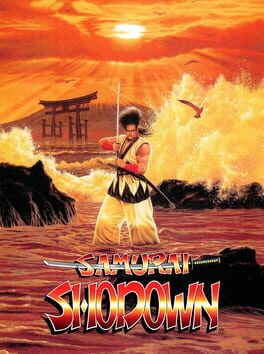
▲
1
▼
According to Yasushi Adachi, the original idea for the game was a side-scrolling action game with various monsters. When considering what would appeal to a global audience while creating the concept for a monster game, he "ultimately felt that a fighting game with ninjas and samurais, which represented distinctly Japanese characters, would do better than just monsters", and changed the concept accordingly. Gen-An Shiranui is the only surviving character from the initial concept.
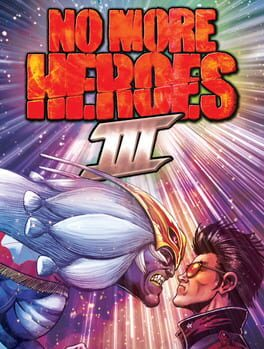
▲
1
▼
 Director Goichi Suda has stated in an interview that they had originally planned to have 7 playable characters in the game early in development. This would have included Travis Touchdown, Shinobu Jacobs, Bad Girl, Native Dancer, Notorious, Kamui Uehara, and Midori Midorikawa.
Director Goichi Suda has stated in an interview that they had originally planned to have 7 playable characters in the game early in development. This would have included Travis Touchdown, Shinobu Jacobs, Bad Girl, Native Dancer, Notorious, Kamui Uehara, and Midori Midorikawa. Only Travis Touchdown was playable in the final release. Suda stated that if they were to ever release DLC for the game, Shinobu would be his first pick as a playable character.
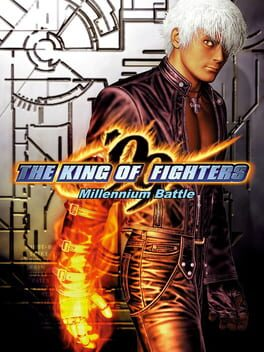
▲
1
▼
Kyo and Iori were originally not planned to be in the game so that the story could focus on the newer characters. However, it was ultimately concluded that the characters were popular enough that they couldn’t just leave them in limbo, so they got a reprieve as well as a redesign.
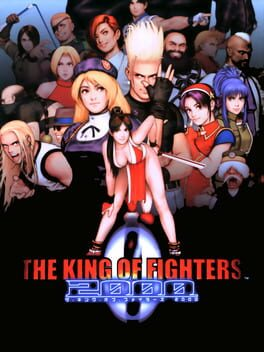
▲
1
▼
Vanessa was originally planned to appear as a playable character rather than a striker character in The King of Fighters '99, but was cut from the roster due to time constraints.
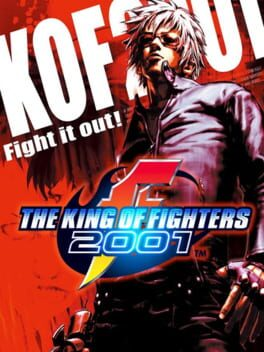
▲
1
▼
The inception of May Lee Jinju was at the request of the game's sponsor, Eolith, expressing a desire for a "Korean Athena" character. This request initially asked for an "idol-like visual fighter," which charged over time into what was in the final game. She was named after the person who was in charge of Eolith at the time.

▲
1
▼
At the 2017 Emerald City Comic Con during a panel with American voice actor John DiMaggio, he explained that he was told to make Wakka's voice sound like an islander, with an island accent. At the time, he broke up with his girlfriend from Hawaii, so he came up with some Hawaiian impersonations which landed him the role of Wakka.

▲
1
▼
Hinako's design was initially based on the protagonist of the manga Jarinko Chie, who used sumo moves. The supervising designer, however, succumbed to insistent requests to use "a debutante" and Hinako gradually transformed into a wellborn young maiden. She was also originally going to fight barefoot, which was also dropped. The only thing that remained from her original concept was the athletic tape on her fingers.
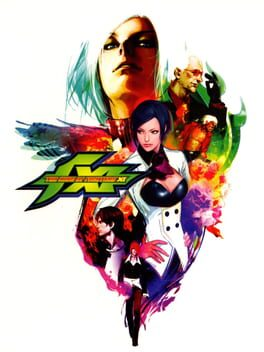
▲
1
▼
Shion was originally a rejected character idea from the early development of The King of Fighters 2003, and was drafted for the purpose of being "Ron's daughter". The artist in charge of the character found the design in a past background illustration and insisted that he be made into the game's penultimate boss.

▲
1
▼
During the early stages of development, there was going to be a Fugitive Team with Chang, Choi, and a third "vicious criminal" character. This third character would later be replaced with Kim for unspecified reasons.
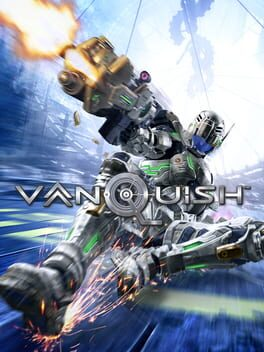
▲
1
▼
In a 2020 interview conducted by the YouTube channel Archipel with the game's creator Shinji Mikami, he talked about the development of Vanquish, which started after he left Capcom and joined PlatinumGames. While he claimed to not remember how he arrived at working on or coming up with the concept for Vanquish, he pitched 5 different project ideas beforehand to Sega and Platinum:
From the start, Mikami wanted to make an open-world game set in a universe similar to the film "Blade Runner", but due to budget, time and staffing constraints, he considered the project to be impossible to make. Regardless, Mikami drafted a design document that he formally pitched to Platinum as a coping mechanism in order to clear his head of the long-gestating idea and work on other projects, stating "I just couldn't switch my mind for a project that fit budget and resources before I gave form to this one. So I just presented it".
Afterwards he moved on to a completely different project; a cel-shaded game set in a universe akin to the works of Studio Ghibli entitled "The Witch and the Piglet". The game was about an evil witch who turned a prince into a piglet and cursed the accompanying village. The villagers would be friendly by day, but at night, they would turn into animals such as horses, pigs, and goats, and do "terrible things" every night, in turn revealing the villagers' evil sides. The main protagonist, a girl with "magical powers who could hover in the sky with an umbrella", had to defeat the witch and break the curse. Mikami believed the game was a mid-scale project that could be easily managed within a given budget and really wanted to make it happen, so he pitched it to Sega. However, Sega strongly declined the pitch, saying that they weren't looking for a game like The Witch and the Piglet.
Angered, Mikami moved on to another project designed exclusively for the Nintendo DS. The game was about a girl with psychic powers and an unknown serial killer who were confined in a hospital. The killer would murder people in the building one by one, and the girl had to figure out if the killer was a doctor, a nurse, or a patient. She used her powers to fight with the killer remotely, move things from a distance, take limited control of peoples' minds, and used a smartphone to send texts and chat during battles, all the while the killer would threaten to kill more people the closer she was to him. One of the central gameplay mechanics involved selecting floating Kanji on the Touchscreen to form two-word phrases such as "Drop Vase" or "Open Door", and watch the results on the hospital's surveillance cameras. Upon pitching it, Sega also rejected the game for the same reason as The Witch and the Piglet, stating the projects were too small and not what they were looking for.
Mikami then recounted an incident during the same meeting, where Sega's executives told him that they were looking for a "Taisaku", or a major project. In response, and angrier than before, he came up with a pitch on the spot called "Keiko and Taisaku", about two delinquent gang leaders, a boy and a girl dressed in high school uniforms, that fought each other, proclaiming "Here, you get Keiko and Taisaku, there's Taisaku in it so it works right?" Sega's executives silently ignored the pitch. Mikami recalled that after this incident came the back-and-forth talks that lead to him working on Vanquish.
Sometime in-between these events, Mikami also had an idea for a rhythm action game that he promptly scrapped after pitching it to Platinum, believing that the idea was not as fun as he had thought it was after presenting it.
From the start, Mikami wanted to make an open-world game set in a universe similar to the film "Blade Runner", but due to budget, time and staffing constraints, he considered the project to be impossible to make. Regardless, Mikami drafted a design document that he formally pitched to Platinum as a coping mechanism in order to clear his head of the long-gestating idea and work on other projects, stating "I just couldn't switch my mind for a project that fit budget and resources before I gave form to this one. So I just presented it".
Afterwards he moved on to a completely different project; a cel-shaded game set in a universe akin to the works of Studio Ghibli entitled "The Witch and the Piglet". The game was about an evil witch who turned a prince into a piglet and cursed the accompanying village. The villagers would be friendly by day, but at night, they would turn into animals such as horses, pigs, and goats, and do "terrible things" every night, in turn revealing the villagers' evil sides. The main protagonist, a girl with "magical powers who could hover in the sky with an umbrella", had to defeat the witch and break the curse. Mikami believed the game was a mid-scale project that could be easily managed within a given budget and really wanted to make it happen, so he pitched it to Sega. However, Sega strongly declined the pitch, saying that they weren't looking for a game like The Witch and the Piglet.
Angered, Mikami moved on to another project designed exclusively for the Nintendo DS. The game was about a girl with psychic powers and an unknown serial killer who were confined in a hospital. The killer would murder people in the building one by one, and the girl had to figure out if the killer was a doctor, a nurse, or a patient. She used her powers to fight with the killer remotely, move things from a distance, take limited control of peoples' minds, and used a smartphone to send texts and chat during battles, all the while the killer would threaten to kill more people the closer she was to him. One of the central gameplay mechanics involved selecting floating Kanji on the Touchscreen to form two-word phrases such as "Drop Vase" or "Open Door", and watch the results on the hospital's surveillance cameras. Upon pitching it, Sega also rejected the game for the same reason as The Witch and the Piglet, stating the projects were too small and not what they were looking for.
Mikami then recounted an incident during the same meeting, where Sega's executives told him that they were looking for a "Taisaku", or a major project. In response, and angrier than before, he came up with a pitch on the spot called "Keiko and Taisaku", about two delinquent gang leaders, a boy and a girl dressed in high school uniforms, that fought each other, proclaiming "Here, you get Keiko and Taisaku, there's Taisaku in it so it works right?" Sega's executives silently ignored the pitch. Mikami recalled that after this incident came the back-and-forth talks that lead to him working on Vanquish.
Sometime in-between these events, Mikami also had an idea for a rhythm action game that he promptly scrapped after pitching it to Platinum, believing that the idea was not as fun as he had thought it was after presenting it.

▲
1
▼
According to a 1999 Nice Games magazine interview with game's director Hideo Kojima, he was asked if the game was originally released for the PC-9821 computer, knowing that it had a very long development cycle:
"Yeah, that was crazy. It was progressing pretty well at first, and by 1990 I had all the storyboarding done—I did it all myself, you see. But thanks to a department transfer at Konami, and the PC Engine port of Snatcher, for awhile I didn’t have much time to work on it. So then when we were working on the PC-9821 version, by that point there was already talk about the next-gen hardware, and that’s how it ended up getting ported to the 3DO, Playstation, and Saturn."